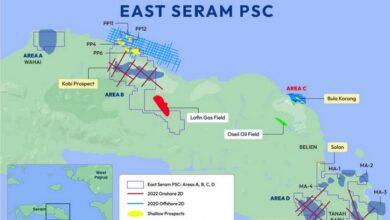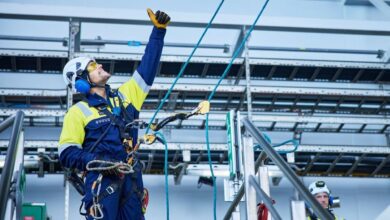DOI issues new BOP requirements for offshore drilling
On 8 June, the US Department of the Interior issued a directive to oil and gas lessees and operators on the Outer Continental Shelf implementing stronger safety requirements that Secretary of the Interior Ken Salazar recommended in his 30-day safety report to the president.
The notice to lessees focuses on safety measures (“Safety NTL”) and applies to both deepwater and shallow-water operations, although drilling operations in waters deeper than 500 ft remain under a six-month moratorium. Shallow-water drilling operations, as well as production activity in both deepwater and shallow-water, are not under a moratorium and will continue as long as they are in compliance with the new safety requirements.
Drilling operations that are not subject to the deepwater drilling moratorium must fulfill new BOP reporting requirements by 17 June and submit the required safety certifications by 28 June. Failure to provide required certifications will result in the issuance of an incident of non-compliance and may result in a shut-in order. The new safety requirements are:
• Show certification by the operator’s chief executive officer that the company is conducting its operations in compliance with all operating regulations and that it has tested its drilling equipment, ensured that personnel are properly trained and reviewed procedures to ensure the safety of personnel and protection of the environment;
• Provide certification from a professional engineer before beginning any new drilling operations using either a surface or subsea BOP stack. The company must also meet well casing and cement design requirements and perform at least two tests on independent barriers for the well and adhere to new casing installation procedures;
• Provide independent third-party verification, before drilling any new well, that the BOP will operate properly with the drilling rig equipment and be compatible with the specific well location, borehole design and drilling plan;
• Provide independent third-party verification showing that the blind-shear rams installed on the surface or subsea BOP stack are capable of shearing the drill pipe in the hole under maximum anticipated surface pressures;
• Adhere to new inspection and reporting requirements for BOP and well control system configurations, BOP and well control test results, BOP and loss of well control events, and BOP and loss of well control system downtime;
• Receive independent third-party verification, before spudding a new well, of re-certification of BOP equipment used on all floating drilling rigs to ensure that the devices will operate as originally designed and that any modifications or upgrades conducted after delivery have not compromised the design or operation of the BOP;
• Have a secondary control system for subsea BOP stacks with ROV intervention capabilities, including the ability to close one set of blind-shear rams and one set of pipe rams. The subsea BOP system must have an emergency shut-in system in the event of lost power, as well as a deadman system and an auto-shear system;
• Conduct ROV hot stab function testing of the ROV intervention panel on subsurface BOP stacks; and
• Provide documentation that the BOP has been maintained according to regulations.
In the coming days, the Department of the Interior will be also be issuing expanded requirements for exploration plans and development plans on the Outer Continental Shelf, said Bureau of Land Management director Bob Abbey, who is serving as acting director of the MMS.
“We are following an orderly, responsible process for implementing stronger safety and environmental requirements for offshore drilling,” Mr Abbey said. “We need to make sure that drilling is done right, that it is done safely, and that oil and gas operators are following the law.”




